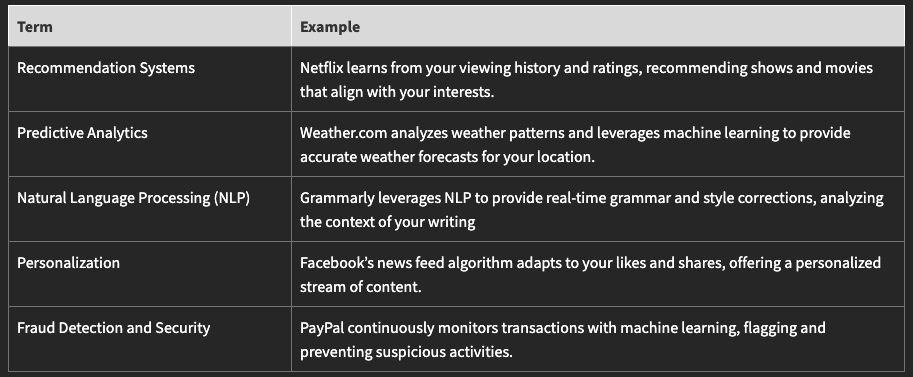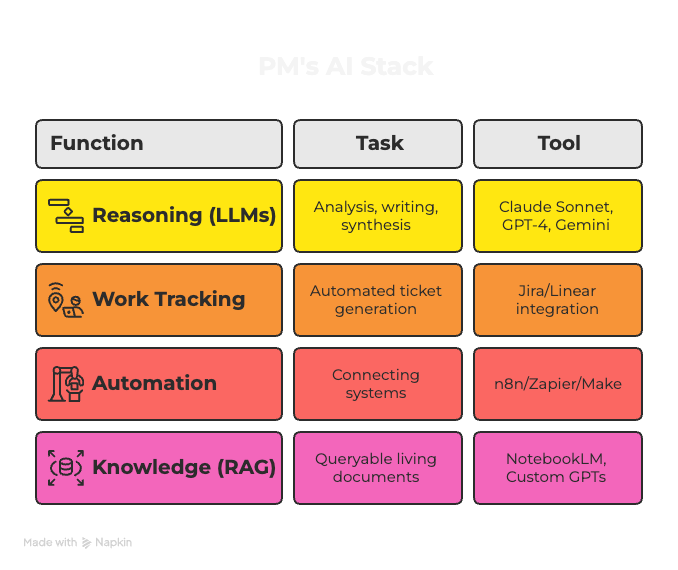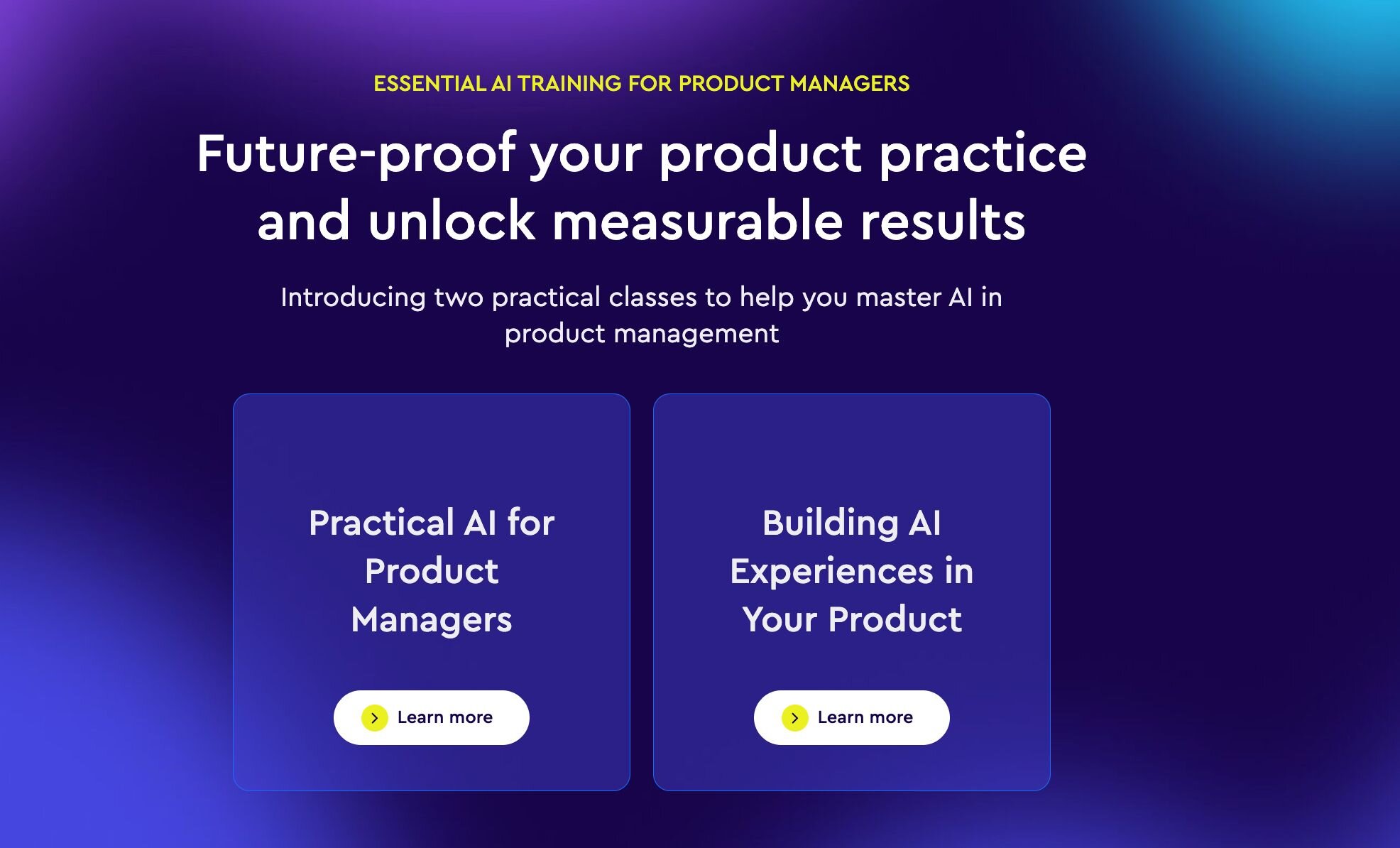Let me ask you a question.
Have you heard of ChatGPT?
If your answer is no, I recommend you take a quick detour to check it out and have your mind blown.
AI and ML are revolutionizing our interactions with technology.
For product managers, the pressure to keep pace with this rapid evolution is immense. More than ever, understanding and leveraging AI/ML can be a game changer in product development and user experience.
But AI/ML isn’t something new that came up earlier this year. It’s been around for a long time and has been integrated into almost every single product experience you have come to love.
Love the never-ending TikToks on your feed? ML.
Love an estimated delivery time? ML.
Love how the product ads in your Instagram feed constantly scratch your itch? ML.
You get it; this isn’t something new.
Technology product managers need to level up their skills as the war to integrate AI/ML into a product has just intensified significantly.
In this post, we’ll explore how product managers can navigate the burgeoning AI/ML landscape, tune their mindsets and strategies around these technologies, and effectively implement them in their products.
To achieve this, a comprehensive understanding of AI and ML technology, relevant use cases, and the capacity to team up with tech and data roles will be crucial. Think of it less as a race to the bleeding edge of tech but more of continually refining processes and models to capitalize on an evolving landscape.
While AI/ML holds game changing potential, approaching them with a critical eye is equally important. As powerful as these technologies are, they are tools to solve problems, not solutions themselves.
Understanding AI/ML basics
At the core lie two concepts:
Artificial Intelligence (AI) and Machine Learning (ML)
While they are used interchangeably, these are different. AI encompasses the broader idea of machines performing tasks in a way that we would consider "smart" or indicative of human intelligence. It's not just about mimicking human actions but also about decision-making capabilities.
On the other hand, ML is a subset of AI that focuses on the ability of machines to receive data and learn from it, improving their accuracy over time without being explicitly programmed for each task. Machine Learning algorithms use statistical techniques to build a model based on collected data. When the model encounters new data, it adjusts its predictions or decisions accordingly, leading to an enhanced understanding and better performance over time.
Data is the cornerstone of AI/ML, serving as both the building block and the fuel for these technologies. High-quality, large volume, and diverse datasets are essential for training AI models effectively. The product manager's role encompasses ensuring that the right data is collected ethically, processed efficiently, and utilized to improve the product while safeguarding user privacy continuously. In essence, understanding and managing data is not just a technical requirement but a strategic imperative in the AI/ML domain, defining the boundaries of what is possible and ethical in the smart technology we aim to create.
I share below a quick snapshot of a few key terms with examples from popular products:
Identifying opportunities for AI/ML in your product
As mentioned earlier, AI/ML are tools to help your product problem, and they are not necessarily the solution themselves.
Before diving head-on into implementing AI/ML technologies, a product manager must carefully evaluate their product for AI/ML readiness. This involves a thorough assessment of the existing infrastructure, the availability of quality data, and the technical capability of the team. It is also critical to ensure that there is a strategic fit for AI/ML within the product’s roadmap and that these technologies can solve real problems or enhance the product in meaningful ways.
Understanding the customer journey can reveal opportunities for intelligent automation or personalized experiences. Observing competitors and emerging industry trends provides additional context for potential AI/ML features that could offer a competitive edge.
AI/ML product discovery is not different from any other product discovery process. Following your standard product management practices is critical to evaluating what the technical solution is and if it involves AI/ML. Understanding the user is paramount. A product manager needs to dig deep into the user's journey to identify pain points that AI/ML could alleviate.
As an example, you can navigate your user journey to evaluate:
Are there repetitive tasks that could be automated?
Could a recommendation engine personalize the user experience?
Is there a demand for predictive features?
Aligning AI/ML with product strategy
Integrating AI and ML into a product is not merely a technical challenge; it requires a strategic alignment with the product's vision and mission. As a product manager, the first step is to ensure that the adoption of AI/ML technologies harmonizes with the long-term goals and brand promise of the product.
AI/ML should not be forced into the product roadmap as an afterthought or simply because it's a trending topic.
Instead, it should be integrated in a way that enhances the core value proposition, strengthens the competitive advantage, and improves the overall user experience.
It's easy to get caught up in the potential of what AI/ML could do, but it's essential to focus on what it should do to benefit the product and its users. Having clear, realistic goals helps in managing expectations, guiding the development process, and measuring success post-implementation.
It’s very easy to get very technical very quickly, and that can also manifest within the core experience of the product. The impact of AI/ML on user experience (UX) cannot be overstated. AI/ML features should not complicate the UX but should rather aim to make it more intuitive, personalized, and efficient.
When designing for such integrations, PM’s need to engage in discussions about the ethical implications of the AI/ML features they're planning to introduce. This includes considering the potential for algorithmic bias, which can occur if the data used to train AI/ML models is not representative of all user demographics. It’s essential to conduct fairness assessments and bias mitigation to ensure that AI/ML technologies serve all users equitably.
A commitment to ethical AI/ML practices is not just a legal and social imperative but also a critical aspect of building trust with users and protecting the brand’s reputation.
Building the right team for AI/ML development
So you’ve managed to get this far with reasonably limited support. That’s great. But now comes the fun part.
Assembling the team.
Building an effective AI/ML team is perhaps one of the most critical steps in ensuring the success of AI/ML initiatives within a product.
The product manager plays a central role in this process, acting as a linchpin that aligns the project's vision with the practicalities of execution. Like any other project, in an AI/ML project, the PM is the strategist who translates customer needs into technical requirements.
However, AI/ML teams are inherently interdisciplinary.
The team primarily includes data scientists, ML engineers, and data engineers to build the infrastructure for data collection and processing.
Teams might include UX/UI designers who ensure that AI/ML features are accessible and intuitive and domain experts who provide industry-specific knowledge that can guide the development of AI/ML models.
The product manager must understand the unique language and contributions of each discipline and foster a collaborative environment where each team member can contribute to their fullest potential.
Building the right team for AI/ML development requires a strategic approach from the product manager, balancing technical skills, industry knowledge, and project management capabilities. Whether through hiring, training, or outsourcing, the goal is to create a team that is not only technically proficient but also deeply integrated with the product’s vision and the company’s culture.
Designing and prototyping AI/ML based features
AI/ML features should be designed with a deep understanding of the user's context, needs, and the problems they are facing. This means going beyond just considering the technical capabilities of AI/ML and focusing on creating a seamless user experience.
Just because you can doesn’t mean you have to.
Your users don’t know what machine learning is, and they shouldn’t. The goal of the product is to solve a user’s problem, not enlighten them about AI.
Incorporating AI/ML into a product is not a one-off task but an ongoing process of iteration, testing, and refinement. The feature that starts as a Minimal Viable Product (MVP) will grow and change through numerous cycles of user interaction, feedback, and development work.
Each cycle is an opportunity to understand the user better and to ensure that the AI/ML feature not only meets the current needs but also anticipates and adapts to future demands.
Measuring success and ROI of AI/ML integrations
This is where a few new things come in.
While your product may have its fair share of business KPIs and metrics to track, product managers need to go one level deeper to understand the performance of their models and ML features.
Success metrics should go beyond traditional KPIs to include model accuracy, user engagement with AI-driven features, and the enhancement of user satisfaction.
The success and ROI of AI/ML integrations are pivotal metrics for organizations investing in these technologies.
You are not only measuring the impact of your integrations but also the performance of your models and feedback on the output delivered by these models.
For instance, if the integration aims to improve customer recommendations, KPIs might include increased customer click-through on recommended products or higher conversion rates.
Future outlook
The work continues beyond just launching a feature in production. One is continuously evolving both the user experience and the underlying models.
The next steps are to scale the AI/ML features, which may involve expanding the datasets, refining the algorithms, and enhancing the infrastructure. The AI/ML features should evolve with ongoing model training to adapt to new data and user behavior, ensuring they remain effective and relevant.
Also, as AI/ML becomes more pervasive, ethical considerations must be front and center. Product managers should advocate for transparency, fairness, and accountability in AI systems.
The role of product managers in integrating AI and ML into products cannot be overstated. They are critical in ensuring that AI is integrated seamlessly and effectively into the product lifecycle.
Moreover, it is vital for product managers to continuously learn and embrace change in order to lead the wave of AI and ML effectively.
As technology continues to evolve, product managers must be willing to adapt and keep up with the latest trends and developments. This will ensure that their products remain competitive and relevant in a rapidly changing market.
In conclusion, product managers have a crucial role to play in successfully integrating AI and ML into products. By following the foundational steps outlined in this post and embracing change, they can ensure that their products are well-positioned to compete in the AI-driven landscape of the future.








